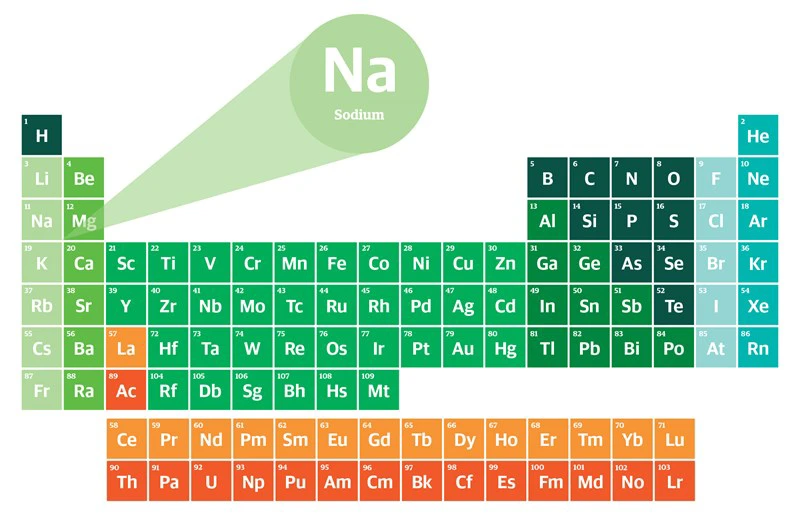News & Advice

Elementary essentials #7: Sodium (Na)
The alkali metal sodium (Na) is the 11th element in the periodic table. It is one of the 19 elements essential for animals but not for the forage plants we regularly feed to livestock. Sodium is the seventh most abundant element on Earth, comprising approximately 2.3% of the Earth’s crust. It is the sixth most abundant metal, although it is highly reactive (even with water).

Discovery of Na
The name sodium is thought to originate from the Arabic word suda, which means headache, suggesting that the wellbeing properties of sodium bicarbonate (or soda) have long been recognised. The importance of salt (sodium chloride) for human health is recognised by the English word salary which derives from the Latin word salarium, which were the waters of salt given to Roman soldiers as part of their wages. The chemical symbol for sodium, Na, derives from the Latin word natrium.
Metallic sodium was first isolated, like calcium and magnesium, in the early 1800s by Sir Humphry Davy in England, through the electrolysis of sodium hydroxide. However, Na only occurs naturally as water soluble compounds in association with chlorides, sulphates, nitrates and carbonates.
Why is Na essential?
In animals (including humans), Na regulates blood volume and pressure, osmotic equilibrium, all other extracellular fluids and pH (in the digestive system). You can have too much of a good thing, as excess NaCl (salt) can cause chronic kidney disease, high blood pressure, cardiovascular disease and stroke.
The vital role of Na in animal production
In soil, Na weathers from sodium-containing minerals such as halite, amphibole and zeolite minerals. Our agricultural soils’ Na levels are also modified by proximity to the sea, prevailing westerly and southerly winds, mountain barriers and rainfall. Soil Na contents are highest down the west and south coasts of both islands. All inland areas of the South Island and the volcanic plateau in the North Island are likely Na deficient.
Temperate pasture species used in New Zealand do not require Na to thrive. However, our grazed pasture species and crops can and do take up soil Na. Common grazed plants fall into two categories: natrophiles – plants that can accumulate Na in their above-ground herbage; and natrophobes – plants whose root systems can take up soil Na but do not transfer much to their above-ground parts. Natrophiles include plantain, chicory, ryegrass, cocksfoot, sub and white clover, while the natrophobes include browntop, timothy, kikuyu, lucerne, red and Caucasian clover.
In general, if mixed herbage Na content is consistently less than 0.1%, then animals grazing these pastures are likely to be Na deficient and suffer loss of productivity. Animals that are Na deficient will show signs of ‘depraved appetite’ or pica. If your livestock are excessively licking or eating wood or soil, or licking sweat off other animals, this is a clue to Na deficiency.
Application of about 100kg/ha of agricultural salt each year in deficient areas should lift the herbage Na levels 2–3 times above the critical level. Deficient animals may also be drenched, or, on extensive farms, free access minerals or salt blocks may be deployed.
Most animals will voluntarily eat salt if it is on offer. Research trials in the Otago hill country and farmer practice has shown that application of salt, even in non-deficient pastures, encourages preferential grazing behaviour on treated areas where stock would not graze before.
Environmental impacts
Regular applications of agricultural salt at rates up to 100kg/ha are unlikely to cause any adverse environmental impacts on either soil health or water quality. The anion in salt is the chloride ion, which is also an essential element both for plants and animals. It is a highly stable ion and there is no possibility of the formation of either chlorine gas or hypochlorite (a strong oxidising agent and a component of bleach). Some industry operators suggest that fertiliser products applied at agronomic rates and containing the chloride ion, e.g. sodium chloride or potassium chloride, have a toxic effect on soil biology – a totally unsubstantiated claim.
Written by Dr Ants Roberts, Chief Scientific Officer